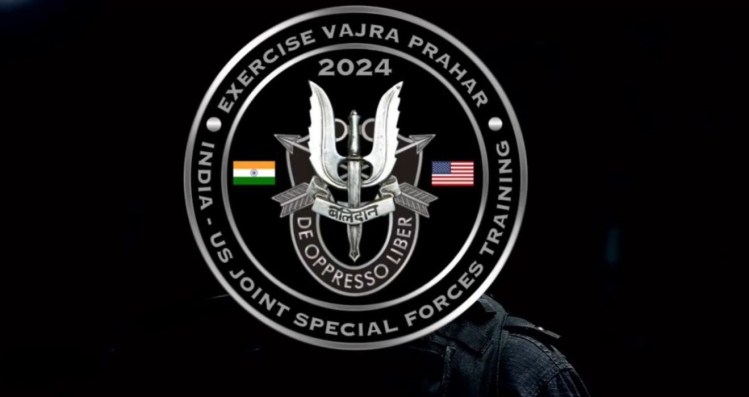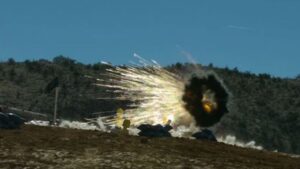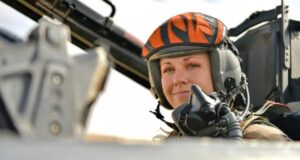If there is one thing we do well in the US Army (and Special Forces in particular), it is training effectively with other nations. We are very seldom going to be sent into harm’s way alone, so getting to know your allies before you fight is essential.
I should probably start off by saying that India is not a formal ally of the United States. The relationship between the US and India is probably better characterized as a strategic partnership. That partnership has significantly evolved over the decades, especially since the end of the Cold War. During the Cold War, India maintained a policy of non-alignment and maintained close ties with the Soviet Union. Since the fall of the Soviet Union in the early 90s, there has been a gradual warming of relations between our two nations.
In recent years, India and the U.S. have developed what we might call a “Comprehensive Global Strategic Partnership.” This covers various areas such as defense, trade, technology, and global security. In 2016, the US formally designated India as a “Major Defense Partner”.
Growing military cooperation has been shown over the years during joint exercises like Vajra Prahar (which we will discuss today) and Yudh Abhyas, an annual training exercise conducted between the armies of the United States and India since 2004. This exercise focuses on counter-terrorism operations, peacekeeping missions under a UN mandate, and humanitarian assistance and disaster relief operations.
The 20th and most recent edition of Yudh Abhyas was held in September 2024 at Mahajan Field Firing Range in Rajasthan, India.
Exercise Vajra Prahar
Exercise Vajra Prahar is an annual joint military exercise between the Special Forces of India and the United States, aimed at enhancing interoperability, sharing best practices, and strengthening defense cooperation. Initiated in 2010, the location of the exercise alternates between the two nations, focusing on joint mission planning, operational tactics, and executing special operations in diverse environments.
Historical Context
The inaugural Vajra Prahar exercise marked the beginning of a series of collaborative military engagements between the Indian Army’s Special Forces and the U.S. Army’s Green Berets. Over the years, the exercise has evolved to address contemporary security challenges, incorporating advanced training modules and real-world scenarios.
If there is one thing we do well in the US Army (and Special Forces in particular), it is training effectively with other nations. We are very seldom going to be sent into harm’s way alone, so getting to know your allies before you fight is essential.
I should probably start off by saying that India is not a formal ally of the United States. The relationship between the US and India is probably better characterized as a strategic partnership. That partnership has significantly evolved over the decades, especially since the end of the Cold War. During the Cold War, India maintained a policy of non-alignment and maintained close ties with the Soviet Union. Since the fall of the Soviet Union in the early 90s, there has been a gradual warming of relations between our two nations.
In recent years, India and the U.S. have developed what we might call a “Comprehensive Global Strategic Partnership.” This covers various areas such as defense, trade, technology, and global security. In 2016, the US formally designated India as a “Major Defense Partner”.
Growing military cooperation has been shown over the years during joint exercises like Vajra Prahar (which we will discuss today) and Yudh Abhyas, an annual training exercise conducted between the armies of the United States and India since 2004. This exercise focuses on counter-terrorism operations, peacekeeping missions under a UN mandate, and humanitarian assistance and disaster relief operations.
The 20th and most recent edition of Yudh Abhyas was held in September 2024 at Mahajan Field Firing Range in Rajasthan, India.
Exercise Vajra Prahar
Exercise Vajra Prahar is an annual joint military exercise between the Special Forces of India and the United States, aimed at enhancing interoperability, sharing best practices, and strengthening defense cooperation. Initiated in 2010, the location of the exercise alternates between the two nations, focusing on joint mission planning, operational tactics, and executing special operations in diverse environments.
Historical Context
The inaugural Vajra Prahar exercise marked the beginning of a series of collaborative military engagements between the Indian Army’s Special Forces and the U.S. Army’s Green Berets. Over the years, the exercise has evolved to address contemporary security challenges, incorporating advanced training modules and real-world scenarios.
Recent Editions
The 14th edition of Vajra Prahar was conducted from November 21 to December 11, 2023, at the Joint Training Node in Umroi, Meghalaya, India. This iteration involved personnel from the U.S. 1st Special Forces Group and the Indian Army’s Eastern Command Special Forces. The training emphasized combat free-fall insertions, waterborne operations, precision targeting, and airborne insertion in mountainous terrains, reflecting the exercise’s adaptability to varied operational environments.
The 15th edition commenced on November 2, 2024, at the Orchard Combat Training Centre in Idaho, USA, and is scheduled to conclude on November 22, 2024. This iteration focuses on joint special operations in desert and semi-desert environments, highlighting the exercise’s commitment to preparing forces for diverse combat scenarios.
Objectives and Significance
Vajra Prahar aims to:
- Enhance Interoperability: By conducting joint training sessions, both forces improve their ability to operate cohesively during combined missions.
- Share Best Practices: The exercise facilitates the exchange of tactical knowledge and operational strategies, enriching the skill sets of participating units.
- Strengthen Defense Ties: Regular interactions foster mutual trust and understanding, reinforcing the strategic partnership between India and the United States.

Training Modules
The exercise encompasses a range of training activities, including:
- Joint Mission Planning: Developing coordinated strategies for complex operations.
- Reconnaissance Missions: Conducting intelligence-gathering operations in varied terrains.
- Unmanned Aerial Systems (UAS): Utilizing drones for surveillance and tactical support.
- Special Operations Execution: Performing high-risk missions requiring precision and coordination.
- Psychological Warfare: Understanding and implementing psychological operations to influence adversary behavior.
Impact and Future Prospects
Exercise Vajra Prahar has significantly contributed to both nations’ Special Forces’ operational readiness and tactical proficiency. The continuous evolution of the exercise ensures that both forces remain adept at addressing emerging security challenges. As global security dynamics evolve, Vajra Prahar serves as a vital platform for India and the United States to collaborate, adapt, and prepare for future contingencies.
To sum up, Exercise Vajra Prahar exemplifies the accumulation of the robust defense cooperation between India and the United States. This provides a dynamic framework for joint training, strategic exchange, and mutual growth in special operations capabilities.
Working together, both groups become better operators. Steel sharpens steel.



